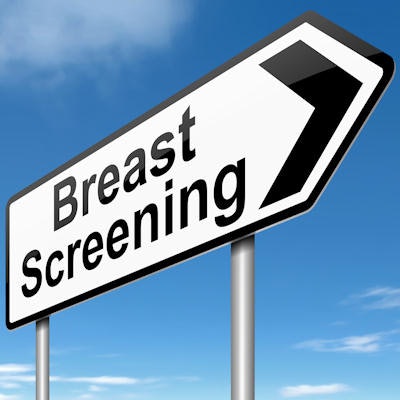
When it comes to screening mammography, guidelines published by the U.S. Preventive Services Task Force (USPSTF) are most closely followed, and the frequency and proportion of women who undergo screening increase with age, according to a study published online May 15 in Breast Cancer Research and Treatment.
Because the USPSTF recommends that women begin biennial screening at age 50, these findings may or may not be good news, depending on where one stands in the debate over when women should start screening for breast cancer and how often, wrote a team led by Dr. Anand Narayan, PhD, from Memorial Sloan Kettering Cancer Center. And the fact remains that many women aren't getting screened at all.
"Despite [observation of the USPSTF guidelines], large numbers of women without access to healthcare do not receive recommended mammography screening using any screening guideline," the group wrote.
Open conversation
In addition to the USPSTF, various other professional organizations have made screening recommendations: The American Cancer Society (ACS) recommends annual screening starting at age 45 through age 55, with biennial screening thereafter, while the American College of Radiology (ACR) and the American College of Obstetricians and Gynecologists (ACOG) recommend annual screening starting at 40.
The conversation about screening mammography tends to focus on when to start and how often to screen, but patterns of screening haven't been investigated sufficiently -- and understanding them may help address the frequency issue, Narayan told AuntMinnie.com.
"We need to delve deeper into screening patterns in order to open the conversation about frequency," he said.
To evaluate women's adherence to mammography screening guidelines, Narayan and colleagues used data from the Behavioral Risk Factor Surveillance System health survey for 2014. The study included 159,123 women between the ages of 40 and 74. The researchers tracked the women's mammography screening patterns, defining "undergoing screening" as having had a mammography exam within the last year or the last two years, based on the USPSTF, ACS, and ACR/ACOG recommendations (because the ACR and ACOG guidelines are the same, they were combined into one category for the purposes of the research).
Narayan and colleagues then calculated the proportions of women who adhered to each of the mammography screening guidelines, stratifying participants by age.
They found that adherence to mammography screening was closest to the USPSTF guidelines (76% to 81%), compared with the ACS guidelines (55% to 81%) and ACR/ACOG recommendations (45% to 66%). Increasing age over five-year categories was associated with improved compliance across all screening recommendations.
Screening discrepancies
The study did show some screening discrepancies in terms of race: Black women were more likely to undergo screening than white women, and American Indian or Alaskan Native women were less likely -- differences that persisted even after adjusting for income and insurance status.
| Adherence to screening guidelines by race in women ages 40-74 | ||
| Racial category | 1-year screening | 2-year screening |
| White | 44%-65% | 58%-80% |
| Black | 48%-72% | 62%-88% |
| Hispanic | 45%-73% | 60%-85% |
| Asian/Pacific Islander | 49%-77% | 64%-88% |
| American Indian/Alaskan Native | 41%-62% | 48%-76% |
Predictably, compliance with mammography screening guidelines was lower in women with less access to healthcare, which Narayan and colleagues attributed to a variety of factors, such as lower income, lack of insurance, not having a personal doctor, trouble dealing with the costs of medications, or not having a medical checkup within the past five years. In fact, fewer than half of women with decreased access to health insurance followed mammography screening guidelines, according to the researchers.
And because poor adherence to mammography screening has been linked with advanced-stage breast cancer in low-income women, it's important to address the problem, the researchers concluded. Providers on all sides of the mammography debate should come together and partner with community organizations to improve mammography screening use in vulnerable patient populations, they wrote.
"It's not a surprise that people with less access to healthcare don't get screened as often," Narayan told AuntMinnie.com. "We need to recognize that there are still large disparities in our healthcare system that need to be addressed."




















